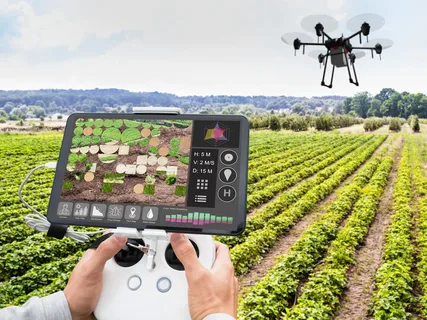Farming, one of humanity’s oldest practices, has continuously evolved over millennia. From rudimentary hand tools to sophisticated machinery, agriculture has undergone remarkable transformations. Among the most significant recent advancements is the rise of precision agriculture, a technological revolution that is reshaping how farmers cultivate their land. This article explores The Evolution of Farming: A Historical Perspective on Precision Agriculture, tracing the journey from traditional farming to the cutting-edge techniques used today.
Early Beginnings: Traditional Farming Practices
For thousands of years, farming was a labor-intensive activity. Early farmers relied on basic tools such as hoes and plows, often powered by human or animal labor. Crops were planted based on experience and observation, with little understanding of soil variability or pest management. This trial-and-error approach defined much of agriculture’s history until the Industrial Revolution introduced mechanization.
The Industrial Revolution and Mechanization
The 18th and 19th centuries brought mechanized tools like the seed drill and steam-powered tractors. These inventions significantly increased productivity but still lacked precision. Fields were treated uniformly, with fertilizers and water applied evenly regardless of the soil’s specific needs. While mechanization was a giant leap forward, it was just the prelude to a more targeted approach.
The Rise of Precision Agriculture
The Evolution of Farming: A Historical Perspective on Precision Agriculture becomes particularly relevant when examining the late 20th and early 21st centuries. Precision agriculture emerged as farmers began integrating technology such as GPS, remote sensing, and data analytics into their practices. By analyzing soil health, moisture levels, and crop conditions on a micro-scale, farmers could optimize inputs and maximize yields while minimizing environmental impact.
Key Technologies Driving Precision Agriculture
Several technologies underpin precision agriculture today:
- GPS and GIS Mapping: Allow farmers to create detailed maps of their fields, tracking variations in soil and crop health.
- Drones and Satellite Imagery: Provide real-time data on crop conditions and detect issues like pest infestations or water stress.
- Variable Rate Technology (VRT): Enables the precise application of seeds, fertilizers, and pesticides tailored to specific field zones.
- Big Data and AI: Facilitate predictive analytics, helping farmers make informed decisions based on vast datasets.
Benefits and Future Outlook
The adoption of precision agriculture has led to increased efficiency, reduced input costs, and improved sustainability. By applying resources only where needed, farmers reduce waste and environmental damage. Looking forward, advances in robotics, machine learning, and sensor technology promise to further refine farming practices, making agriculture smarter and more sustainable.
Conclusion
Understanding The Evolution of Farming: A Historical Perspective on Precision Agriculture highlights how far agriculture has come and the exciting potential ahead. From humble beginnings with simple tools to today’s data-driven methods, farming continues to innovate. Precision agriculture stands at the forefront of this evolution, offering a future where food production is more efficient, environmentally friendly, and responsive to global needs.


